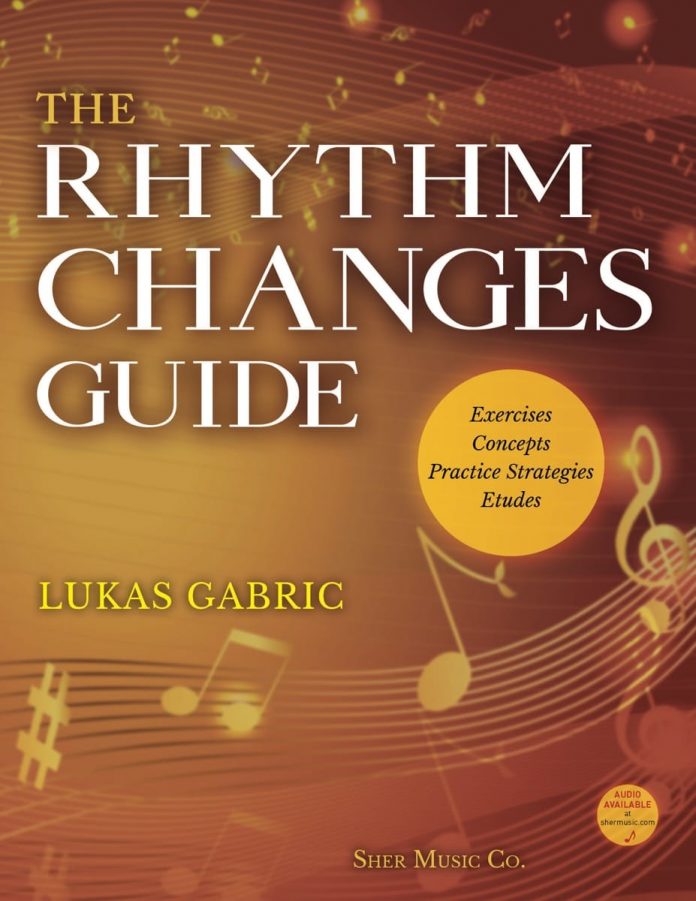This is a very useful new guide to playing rhythm changes in jazz by Lukas Gabric, a semi-finalist in the 2013 Thelonious Monk Competition and a member of the saxophone faculty at the Juilliard MAP preparatory division. Gabric holds a PhD in musicology for a dissertation exploring Coltrane’s blues output through Schenkerian and Formenlehre perspectives.
In the time of Covid-19 it seems a relatively rare event to receive a hard copy of a book for review, but it’s obviously possible – the copy from which I’m reviewing arrived from the US within a few days, which seems remarkable when some publishers in the UK will now only send a PDF or a password to access the material digitally. I suppose the trend towards digital sources for review was always going to happen, but the pandemic has just expedited the process. We have the same issue with audio material for review, which is a shame, as I like to review the actual physical item that a customer might still want buy – what does it look and feel like? – this matters somehow alongside the actual content, whether words or sound.
Anyway, back to Gabric’s book. It’s a relatively thin offering, but that’s ok because it’s a very specific piece of work, offering the learner or more experienced player some very useful nuggets of information on how to negotiate one of the most played, but most tricky chord sequences in jazz. The sequence originates of course from Gershwin’s tune I Got Rhythm. Jazz musicians got hold of it and it evolved into many different new tunes over the same chord changes, broadly speaking. On a more detailed level the chord sequence in some cases became more complex. For example, Horace Silver added a chromatic middle-eight section on his tune Tippin’.
Jazz musicians approach playing rhythm changes in different ways, but in my experience it’s very difficult to play effective solos on this chord sequence without sounding too prescribed and just playing numerous familiar phrases over particular chord progressions. The problem is partly to do with the speed of the chord changes, but also the A section (that amounts to three quarters of the chord sequence) which has a lack of genuine movement away from the tonic chord; that somehow seems to encourage too much repetition in improvised phrasing.
However, help is at hand – Gabric has very useful suggestions, including the use of the blues scale, with very different notated examples of this from Sonny Stitt, Sonny Rollins, Michael Brecker and Dexter Gordon. If it was good enough for them then it should be fine for the rest of us. Gabric also suggests the use of the major pentatonic scale, in very specific ways.
There’s also the seemingly more unlikely option of using a Schenkerian approach. Schenker will be familiar to many musicians and music students from his work as a music theorist and analyst, but less familiar as a route to negotiating rhythm changes in jazz. In short, he’s more interested in the macro rather than the micro, in terms of overall forms and chord progressions, so it could be a useful approach which would help with getting a sense of overall structure in an improvised solo, rather than just chasing the changes around and getting nowhere fast in terms of generating a worthwhile melodic line.
In addition to this there’s a section on embellishing triads, with examples from some of the aforementioned jazz masters, together with other notated examples of Cannonball Adderley and John Coltrane. Gabric ends by giving a set of etudes of increasing difficulty, based on the ideas in the rest of the book. Overall I’d say this book is well worth a try, helpful for all from beginners up to the much more experienced player.
The Rhythm Changes Guide: Exercises, Concepts, Practice Strategies, Etudes, by Lukas Gabric. Sher Music, 95pp, $18. ISBN-13: 978-0-997661767
















